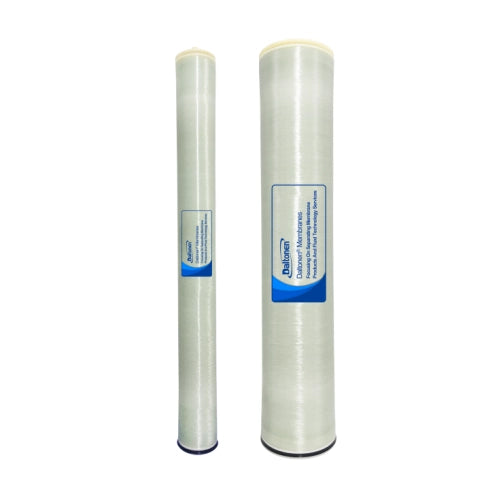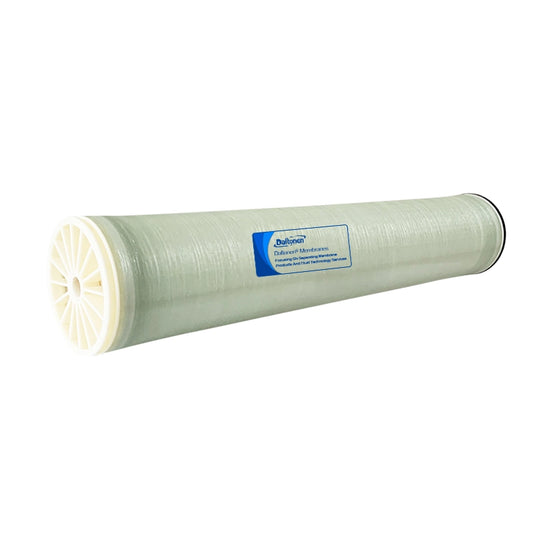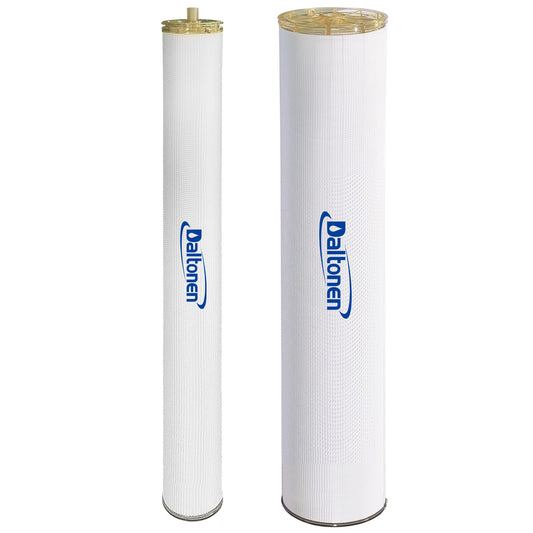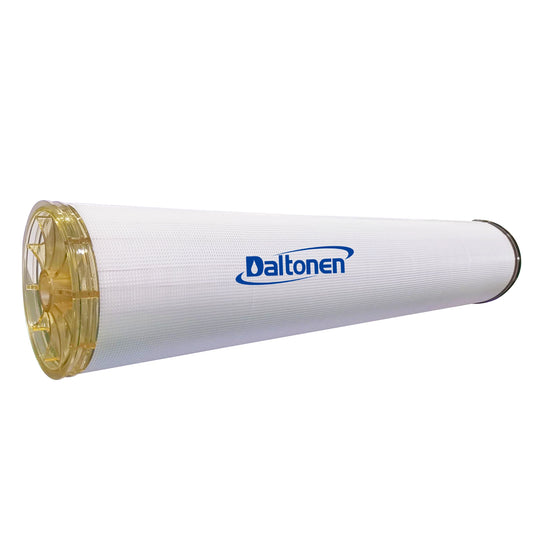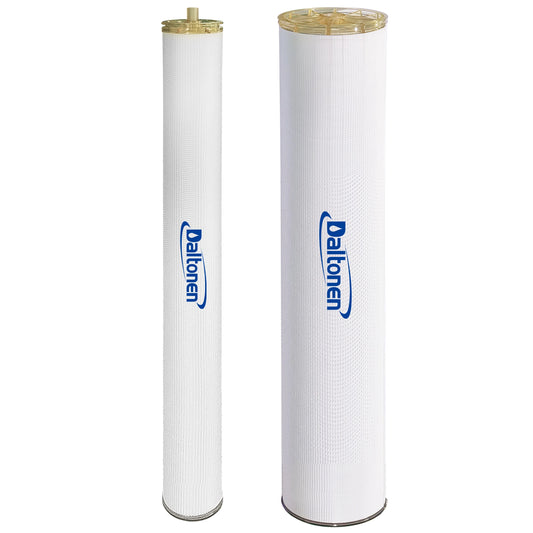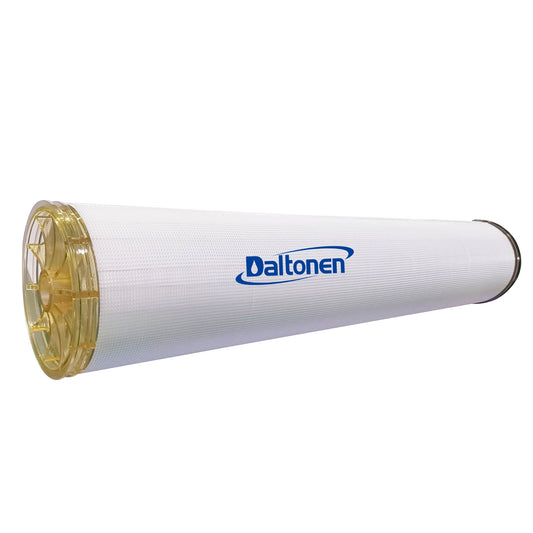Application and Prospects of Reverse Osmosis Membrane Technology in Electroplating Industry Wastewater Treatment and Resource Recovery
25 Mar 2025
I. Technical Challenges in Electroplating Industry Wastewater Treatment
Electroplating, a crucial metal surface treatment process widely used in automotive, electronic, and aerospace industries, generates wastewater with high concentrations of heavy metals (such as nickel, copper, chromium, and zinc), cyanides, organic additives, and acidic/alkaline substances. This wastewater is highly toxic and complex in composition. Traditional treatment methods like chemical precipitation can remove some pollutants but have significant drawbacks: large volumes of sludge (5-8 kg per ton of wastewater), low heavy metal recovery rates (typically less than 30%), and unstable effluent quality. For instance, a Yangtze River Delta electroplating park discharging 3,000 tons of wastewater daily requires a 5,000 m² sludge drying facility, with annual treatment costs exceeding 20 million yuan, highlighting the limitations of existing technologies.

II. Principle and Process Innovation of Reverse Osmosis Membrane Technology
Reverse osmosis (RO) membranes, with a pore size of 0.1-1 nm in polyamide composite membranes, can achieve over 99% ion rejection under operating pressures of 1.5-8 MPa. In electroplating wastewater treatment, new anti-pollution membranes have significantly enhanced applicability:
-
Graphene-modified membranes: A Tsinghua University team developed a GO-TFN membrane, increasing Ni²+ rejection to 99.8% and flux by 40%.
-
Ceramic membrane pretreatment systems: 0.05 μm pore size ceramic membranes as RO pretreatment extend membrane pollution cycles threefold.
-
Acid-alkali tolerant membrane materials can stably operate in pH 2-12 ranges, adapting to the fluctuating characteristics of electroplating wastewater.
Typical process optimization case: A Guangdong electroplating factory adopted a "regulation tank → ceramic membrane ultrafiltration → two-stage RO" process, increasing nickel wastewater recovery from 65% to 92%, with concentrated water nickel concentration reaching 28 g/L, directly reusable in electroplating tanks.
III. Economic and Environmental Benefits Analysis of Key Application Scenarios
-
Heavy metal recovery:
-
A Shenzhen circuit board factory's RO system treating copper-containing wastewater achieved a 98.7% copper ion recovery rate, recycling 42 tons of copper worth 2.6 million yuan annually.
-
Concentrated water, after electrolytic recovery device treatment, reached 99.95% copper purity, achieving hazardous waste resource utilization.
-
-
Rinse water circulation:
-
A Zhejiang electroplating park using a "tubular RO + DTRO" combined process increased rinse water reuse from 70% to 96%.
-
Treatment cost per ton of water dropped to 1.8 yuan, 40% lower than urban industrial water prices.
-
-
Zero liquid discharge (ZLD) system:
-
A Jiangsu surface treatment company's RO + MVR evaporation system achieved 99.2% water reuse, saving 380,000 tons of water annually.
-
System energy consumption reduced to 8 kWh/m³, 65% lower than traditional evaporation processes.
-

-
IV. Technical Bottlenecks and Solutions
Despite significant achievements, RO technology application in the electroplating field still faces challenges:
-
Membrane pollution control:
-
A Suzhou company used pulsatile air-water backflushing technology, reducing membrane cleaning frequency from weekly to monthly.
-
Online electrochemical monitoring systems enable pollution warnings, reducing cleaning agent usage by 60%.
-
-
Concentrated water treatment challenges:
-
A Nanjing environmental protection company developed a catalytic oxidation-RO coupled process, increasing COD removal to 95%.
-
Fractional crystallization technology separates sodium sulfate and sodium chloride from concentrated water, raising resource utilization to 85%.
-
-
Cost optimization paths:
-
A Hangzhou project adopted a wind-solar hybrid power system, reducing energy cost per ton of water by 0.6 yuan.
-
Membrane life extended from 18 to 36 months, decreasing equipment depreciation by 45%.
-
V. Technical Integration and Future Trends
-
New membrane technology integration:
-
Forward osmosis (FO)-RO combined systems, leveraging electroplating solution osmotic pressure differences, are expected to reduce energy consumption by 30%.
-
Membrane capacitive deionization (MCDI) technology can achieve 99% recovery of low-concentration wastewater (<500 mg/L).
-
-
Intelligent operation and maintenance system:
-
Digital twin-based intelligent control systems, applied in a Guangdong demonstration project, reduced membrane system failure rates by 80%.
-
Machine learning algorithms optimize operating parameters, improving system energy efficiency by 12-15%.
-
-
Material science breakthroughs:
-
CAS developed biomimetic nanopore membranes, increasing chromate ion selectivity by three orders of magnitude.
-
Self-healing membrane materials can restore over 95% flux within 24 hours.
-
VI. Industrial Policies and Market Prospects
With the implementation of the "Electroplating Pollutant Emission Standard" (GB 21900-2020), the RO membrane market is growing at 18.7% annually, expected to reach 4.7 billion yuan by 2025. Key regions have clear policy orientations:
-
The Pearl River Delta requires mandatory RO reuse systems in electroplating parks.
-
The Yangtze River Delta enforces wastewater reuse rates of no less than 75%.
A listed company's financial report shows a 41.2% gross margin in its electroplating wastewater RO business, becoming a new profit growth point.
Conclusion
Reverse osmosis membrane technology is transforming the electroplating industry's sustainable development model. Through innovation and process optimization, it not only achieves pollution control targets but also creates significant economic value. With breakthroughs in new materials, intelligent control, and system integration, RO technology is expected to drive the electroplating industry toward near-zero emissions and full resource circulation, providing key technological support for the green transformation of manufacturing. Over the next five years, this field is expected to generate a billion-level emerging environmental protection equipment market, forming a new paradigm of coordinated development of environmental and economic benefits.
Tags:


